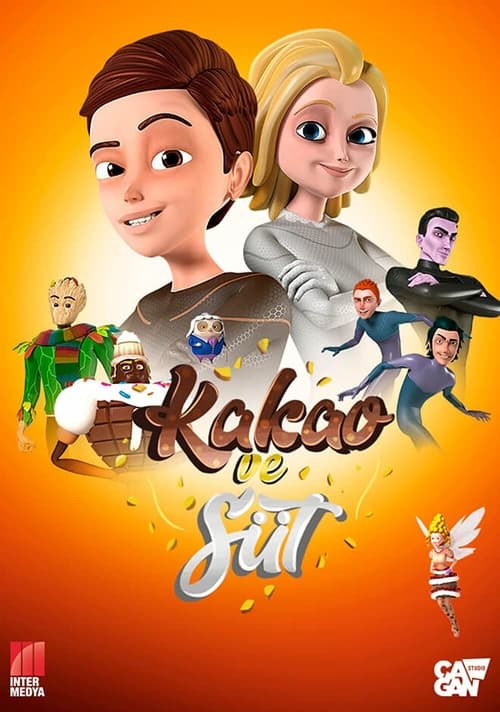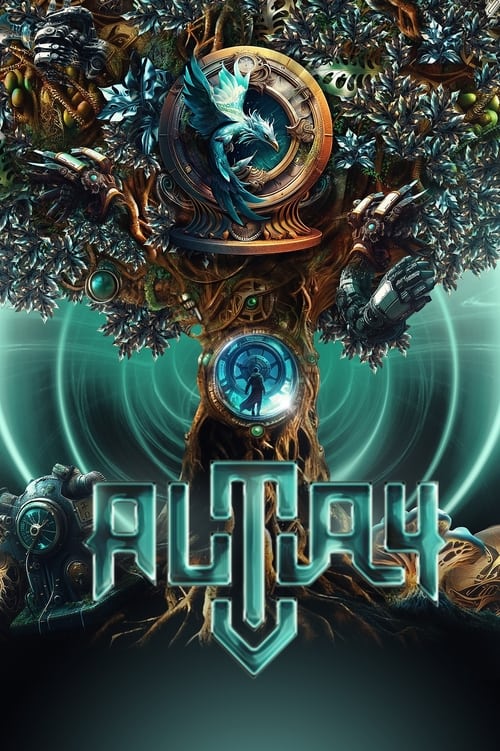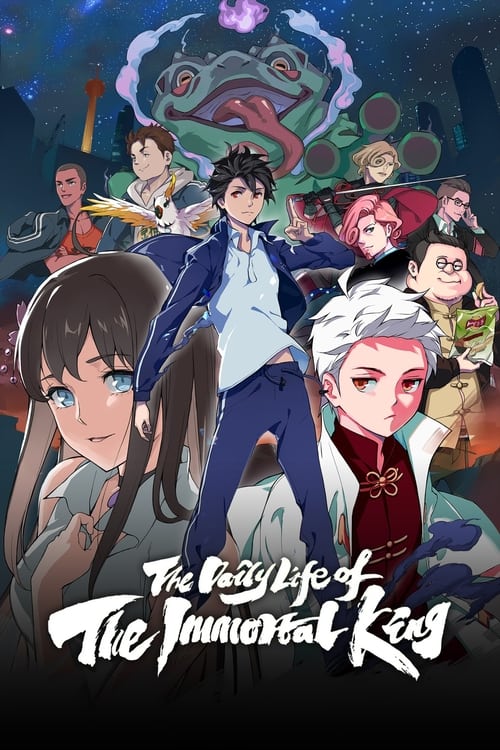
Ask Your Own Question
What is the plot?
In the opening scenes of "Kakao ve Süt," we are introduced to the main character, a young woman named Zeynep, who is struggling with her life in a small town. She works at a local café, where she serves coffee and pastries to the regular customers. Zeynep is portrayed as a dreamer, often lost in her thoughts about a better life and her aspirations to become a successful artist. Her interactions with the café's patrons reveal her kind-hearted nature, but also her frustrations with her current situation.
One day, while working at the café, Zeynep meets a mysterious man named Kerem. He is charming and enigmatic, and their initial conversation is filled with playful banter. Zeynep feels an instant connection with him, which ignites a spark of hope in her otherwise mundane life. Kerem, however, is not just a stranger; he has his own secrets and a complicated past that he is trying to escape.
As their relationship develops, Zeynep learns that Kerem is an artist as well, which deepens their bond. They share their dreams and fears, and Zeynep feels inspired by Kerem's passion for art. However, Kerem is haunted by his past mistakes, which he struggles to confront. This internal conflict creates tension in their relationship, as Zeynep begins to sense that Kerem is not being entirely honest with her.
In a pivotal scene, Zeynep discovers a hidden sketchbook belonging to Kerem, filled with drawings that depict his troubled past. The sketches reveal his struggles with addiction and loss, which he has been trying to overcome. This revelation shocks Zeynep, and she feels torn between her growing feelings for him and the fear of his dark history. She confronts Kerem about the sketches, leading to an emotional argument where he finally opens up about his past. This moment of vulnerability brings them closer, but it also raises questions about whether Zeynep can accept Kerem's flaws.
As their relationship deepens, Zeynep decides to take a leap of faith and invites Kerem to participate in a local art exhibition. She believes that showcasing their work together could be a turning point for both of them. Kerem is initially hesitant, fearing that his past will overshadow their success. However, Zeynep encourages him to embrace his story and use it as a source of strength. This decision marks a significant turning point in their relationship, as they begin to work together on their art.
The night of the exhibition arrives, and Zeynep is filled with excitement and anxiety. She has poured her heart into her artwork, and she hopes that it will resonate with the audience. Kerem, on the other hand, is plagued by self-doubt. As they set up their pieces, tensions rise when Kerem's past resurfaces in the form of an old acquaintance who confronts him at the event. This encounter forces Kerem to confront his demons publicly, and he struggles to maintain his composure.
During the exhibition, Zeynep's artwork receives praise, but Kerem's past threatens to overshadow their success. In a moment of desperation, Kerem steps outside to collect himself, leaving Zeynep feeling abandoned. She follows him, and they have a heartfelt conversation where Zeynep reassures him of her support. This moment solidifies their bond, and Kerem finally accepts that he can move forward with Zeynep by his side.
As the exhibition concludes, Zeynep and Kerem receive an unexpected offer from a prominent art gallery interested in showcasing their work. This opportunity represents a new beginning for both of them, and they celebrate their success together. However, the joy is short-lived as Kerem's past continues to haunt him, leading to a moment of crisis where he must choose between his old habits and the new life he wants to build with Zeynep.
In the climax of the story, Kerem faces a critical decision when he is tempted to relapse into his old ways. Zeynep, sensing his struggle, confronts him and expresses her fears of losing him. This confrontation forces Kerem to confront his addiction head-on. He realizes that he must take responsibility for his actions and choose a healthier path. In a powerful scene, he decides to seek help, demonstrating his commitment to both himself and Zeynep.
The series concludes with Zeynep and Kerem embarking on a new chapter in their lives. They are seen working together on their art, with Kerem attending support meetings and Zeynep continuing to pursue her dreams. Their relationship is stronger than ever, built on trust, understanding, and a shared passion for art. The final scenes depict them preparing for their first joint exhibition at the gallery, symbolizing their growth and the bright future ahead of them.
More TV Shows Like This
Browse All TV Shows →What is the ending?
In the ending of "Kakao ve Süt," the main characters face the culmination of their emotional journeys. The story concludes with a sense of resolution as they confront their pasts and make choices that define their futures. The protagonist, who has been on a quest for self-acceptance and understanding, finds a new path forward, while the supporting characters also come to terms with their relationships and personal struggles.
As the final scenes unfold, the protagonist stands at a crossroads, reflecting on the lessons learned throughout the series. The relationships that have been central to the narrative reach a pivotal moment, leading to reconciliations and new beginnings. The ending leaves viewers with a sense of hope and the possibility of change, emphasizing the importance of connection and self-discovery.
The final act of "Kakao ve Süt" begins with a quiet, introspective scene. The protagonist, a young woman named Zeynep, sits alone in her room, surrounded by the remnants of her past. The walls are adorned with photographs that capture moments of joy and sorrow, each telling a story of her journey. Zeynep's expression is a mix of determination and vulnerability as she contemplates her next steps. The camera lingers on her face, capturing the flicker of emotions as she grapples with her identity and the relationships that have shaped her.
Scene transitions to a bustling café, a central location throughout the series. The atmosphere is lively, filled with the chatter of patrons and the clinking of cups. Zeynep enters, her heart racing as she spots her friends gathered at a table. Each character is engaged in their own conversations, but there's an underlying tension in the air. Zeynep approaches, and the moment she sits down, the group falls silent, their eyes filled with anticipation. This scene marks a turning point, as Zeynep prepares to share her truth.
As she speaks, her voice trembles with emotion. She reveals her struggles with self-acceptance and the fear of losing those she loves. The camera captures the reactions of her friends--some nod in understanding, while others look on with concern. This moment is pivotal, showcasing the vulnerability that has been a recurring theme throughout the series. Zeynep's courage to open up creates a ripple effect, prompting her friends to share their own fears and insecurities.
The scene shifts to a montage of flashbacks, illustrating the characters' journeys. We see moments of conflict, laughter, and tears, each memory reinforcing the bonds they share. The montage culminates in a powerful moment where Zeynep and her friends embrace, symbolizing their commitment to support one another moving forward. The warmth of their connection is palpable, and the audience can feel the weight of their shared experiences.
Next, the narrative takes us to a serene park, where Zeynep finds herself alone once more, reflecting on her choices. The sun sets in the background, casting a golden hue over the landscape. She pulls out a small notebook, filled with her thoughts and aspirations. As she writes, her expression shifts from uncertainty to resolve. This scene emphasizes her growth, as she acknowledges her past while looking forward to the future.
The final moments of the series bring Zeynep back to the café, where she is greeted with smiles and laughter. Her friends have organized a small celebration, a testament to their renewed commitment to one another. The camera pans across the table, showcasing the joy and camaraderie that has blossomed from their shared struggles. Zeynep raises her glass, and as she speaks, her voice is filled with hope. She expresses gratitude for the journey they've taken together and the strength they've found in each other.
As the screen fades to black, the audience is left with a lingering sense of optimism. Each character has faced their demons and emerged stronger, ready to embrace the future. Zeynep, in particular, stands as a symbol of resilience, having transformed her pain into a source of strength. The series concludes with the message that while the journey of self-discovery is fraught with challenges, the bonds of friendship can illuminate the path forward.
Is there a post-credit scene?
In the TV show "Kakao ve Süt," there is indeed a post-credit scene that adds an intriguing layer to the narrative. After the main credits roll, the scene opens in a cozy café, where the warm glow of the evening light filters through the windows, casting a golden hue over the tables.
The camera pans to a corner where the main characters, Merve and Efe, are seated together, their expressions a mix of contentment and contemplation. Merve, with her hair slightly tousled and a playful smile on her lips, stirs her cup of hot chocolate, the steam rising gently. Efe, leaning back in his chair, watches her with a soft gaze, his eyes reflecting a blend of admiration and uncertainty about their future.
As they engage in light-hearted banter, the atmosphere is filled with laughter, but there's an underlying tension as both characters seem to be grappling with unspoken feelings. Merve suddenly grows serious, her smile fading slightly as she looks out the window, lost in thought. Efe notices the change and leans forward, concern etched on his face.
In this moment, the scene captures the essence of their relationship--filled with joy yet shadowed by the complexities of their past and the uncertainties of what lies ahead. The camera zooms in on Merve's hand, which nervously taps the table, symbolizing her internal conflict.
Just as Efe reaches out to comfort her, the scene cuts to black, leaving viewers with a lingering sense of anticipation and curiosity about their next steps. This post-credit moment encapsulates the emotional depth of the series, hinting at future developments while reinforcing the bond between the characters.
What is the significance of the relationship between the main characters, Aylin and Mert?
Aylin and Mert's relationship is central to the narrative of 'Kakao ve Süt.' Their dynamic evolves from childhood friends to romantic interests, showcasing the complexities of love and friendship. Aylin's initial hesitance stems from her fear of losing Mert as a friend, while Mert grapples with his feelings and the pressure of societal expectations. Their interactions are filled with emotional tension, marked by moments of vulnerability and misunderstandings that highlight their deep connection.
How does Aylin's family background influence her decisions throughout the series?
Aylin's family background plays a crucial role in shaping her character and decisions. Coming from a traditional family, she feels the weight of her parents' expectations, particularly regarding her future and relationships. This pressure often leads her to make choices that conflict with her desires, creating internal conflict. Her struggles with familial obligations and her quest for personal happiness are depicted through poignant scenes where she confronts her parents, revealing her emotional turmoil.
What role does the café play in the development of the characters and their relationships?
The café serves as a pivotal setting in 'Kakao ve Süt,' acting as a backdrop for many key interactions between characters. It is where Aylin and Mert share their first significant moments, including heartfelt conversations and playful banter. The café symbolizes a safe space for them to explore their feelings, but it also becomes a site of conflict as external pressures intrude. The ambiance of the café, with its warm lighting and cozy atmosphere, contrasts with the emotional struggles the characters face, enhancing the narrative's depth.
How does the character of Elif impact Aylin's journey throughout the series?
Elif, Aylin's best friend, serves as both a confidante and a catalyst for Aylin's growth. Her supportive nature encourages Aylin to pursue her dreams and confront her fears, particularly regarding her relationship with Mert. However, Elif also challenges Aylin to consider the consequences of her choices, leading to moments of tension between them. Their friendship is tested as Aylin navigates her feelings, and Elif's unwavering loyalty ultimately helps Aylin find clarity in her journey.
What are the key moments that lead to the turning point in Aylin and Mert's relationship?
Several key moments serve as turning points in Aylin and Mert's relationship. One significant scene occurs during a rain-soaked confrontation where Aylin finally expresses her feelings, leading to a passionate exchange that reveals their mutual affection. Another pivotal moment is when Mert faces a personal crisis, prompting Aylin to step in and support him, solidifying their bond. These emotionally charged scenes are marked by intense dialogue and physical closeness, illustrating the depth of their connection and the stakes involved in their relationship.
Is this family friendly?
"Kakao ve Süt," produced in 2021, is a family-oriented series that primarily focuses on themes of friendship, love, and the challenges of growing up. However, there are a few elements that may be considered objectionable or upsetting for children or sensitive viewers:
-
Emotional Conflict: The show features scenes of emotional distress, including arguments and misunderstandings between characters, which may be intense for younger viewers.
-
Family Struggles: There are moments that depict familial issues, such as parental disagreements or the impact of personal choices on family dynamics, which could be heavy for some audiences.
-
Romantic Tensions: The series includes romantic subplots that may involve jealousy or heartbreak, which could be confusing or upsetting for younger viewers who are not familiar with such themes.
-
Social Issues: The characters face various social challenges, including peer pressure and bullying, which may resonate with sensitive viewers and evoke strong emotional responses.
-
Mild Language: There are instances of mild language that may not be suitable for all children, depending on parental discretion.
Overall, while "Kakao ve Süt" is designed to be family-friendly, these elements may require parental guidance for younger audiences.















